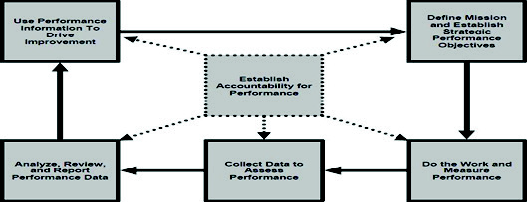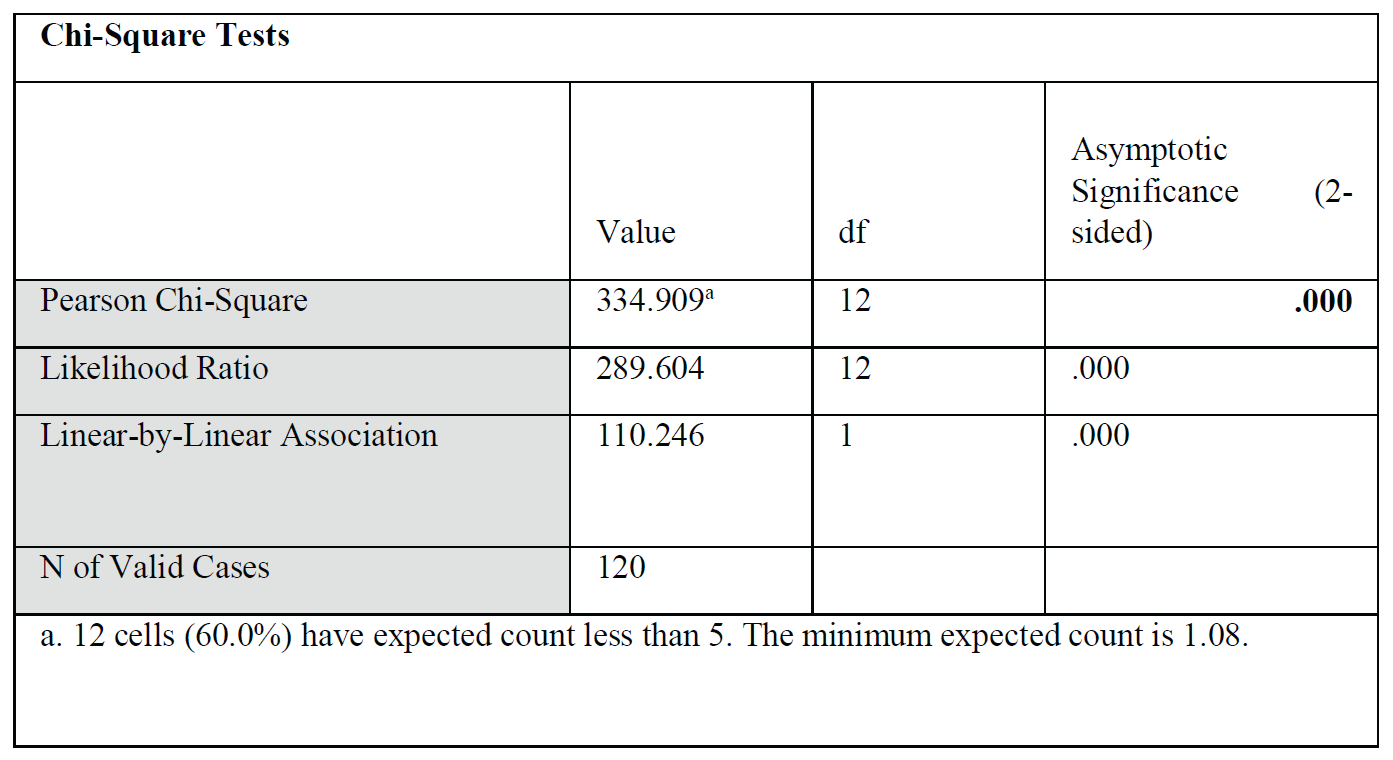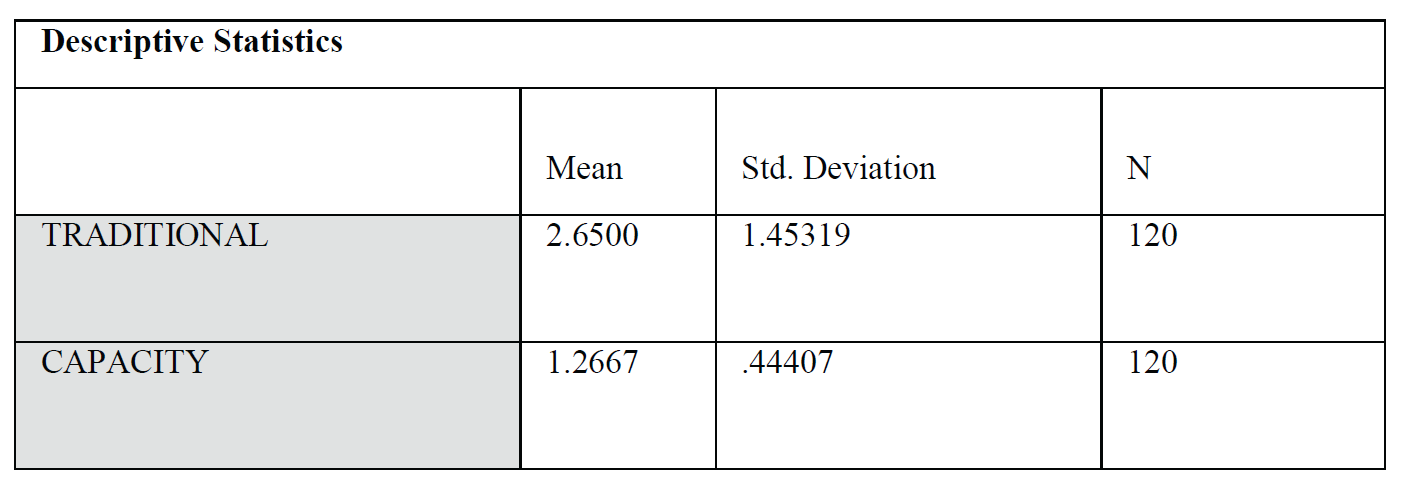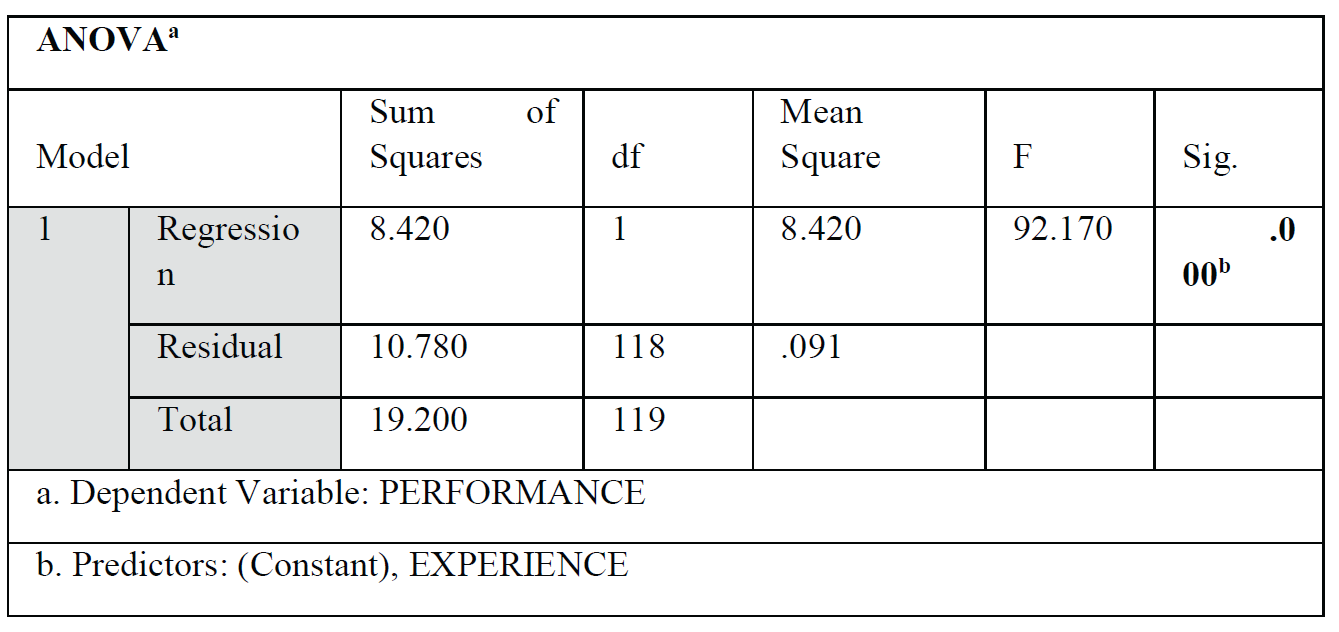ABSTRACT
Globally the success of any organization is increasingly depending upon the sustained results it can deliver on continuous basis. Human Resources Management is driving all resources towards achieving this effort and to satisfy all stake holders of the organizations. Performance management is seen as a strategic approach in delivering sustained organizational success by managing and improving the individual employee and team performance. Globalization has brought in pierce competition on the quality of products /services the companies have to deliver. Developing economies like Brazil, Russia, India and China (BRIC countries) are creating opportunities galore in the growth of new business sectors. The fast pace of development during the last decade has lead to dearth of employable people, more so in Banking, Insurance, IT and ITES sectors. The crucial challenge for the organizations is how to manage employee current performance and also to improve their future performance.
1. INTRODUCTION
PERFORMANCE APPRAISAL
The importance of Human Resource Management (HRM) and Human Resource Development
(HRD) is increasingly being appreciated across the world. The objective of performance appraisal is to evaluate an employee’s performance of a job. Knowledge, skill and ability by themselves cannot guarantee performance. Hence, performance evaluation plays a pivotal role in measuring actual deliverables. Performance appraisal has gained momentum and critical importance in assessing employee’s actual work delivery. India, being a developing economy, with rapid expansion of industry, performance management and appraisal are critical factors in managing effective employee’s performance. Organizations are designing and implementing the right method of performance appraisals to achieve organizational objectives successfully.
The Oxford English Dictionary defines performance as the ‘accomplishment, execution, carrying out and working out of anything ordered or undertaken’. Hence, it is said that performance is the way the organizations, teams and individuals get their work done.
Campbell (1990) defines performance as behaviour. It is something done by the employee. This concept differentiates performance from out-comes. Outcomes are the result of an individual’s performance, but they are also the result of other influences. In other words, there are more factors which determine outcomes than just an employee’s behaviours and actions. Armstrong and Baron (1998) defined it as a “strategic and integrated approach to increasing the effectiveness of companies by improving the performance of the people who work in them and by developing the capabilities of teams and individual contributors.” Brumbrach (1998) defines ‘performance means both behaviours and results. Behaviours emanate from the performer and transform performance from abstraction to action. The product of mental and physical effort applied to tasks and can be judged apart from results.’ Aubrey Daniels (2004) says that performance is a blend of two necessary critical elements, behaviour and results.
The Chartered Institute of Personnel and Development (CIPD) facts sheet defines that Talentconsists of those individuals who can make a difference to organizational performance, either through their immediate contribution or in the longer run by demonstrating the highest levels of potential. Talent management is the sys-tematic attraction, identification, development, engagement/retention and deployment of those individuals with high potential who are of particular value to an organization.
Performance management
The Society for Human Resource Management (SHRM) defines that “performance management is the organized method of monitoring results of work activities, collecting and evaluating performance to determine achievement of goals and using performance information to make decisions, allocate resources and communicate whether objectives are met.”
Institute of Personnel Management (1992)defines performance management as ‘A strategy which relates to every activity of the organization set in the context of its human resources policies, culture and style and communications systems. The nature of the strategy depends on the organizational context and can vary from organi-zation to organization.’ According to Lockett (1992), ‘the essence of performance management is the development of individuals with competence and commitment, working towards the achievement of shared meaningful objectives within an organization which supports and encourages their achievement.’
American Compensation Association (1996) defines Performance Management as ‘an effective performance management system that aligns individual performance with the organization’s mission, vision and objectives.’
Bill Kennedy, DJ Ellison and Will Artley (2001) in the performance based management handbook defines that ‘Performance-based management is a systematic approach for performance improvement through an ongoing process of establishing strategic performance objectives; measuring performance; collecting, analysing, reviewing, and reporting performance data; and using that data to drive performance improvement.’ Susan M Heathfield (2005) defines that performance management is the process of creating a work environment or setting in which people are enabled to perform to the best of their abilities. ‘Performance management is a whole work system that begins when a job is defined as needed and it ends when an employee leaves the organization.’ Briscoe and Claus (2008) say ‘Performance management is the system through which organizations set work goals, determine performance standards, assign and evaluate work, provide performance feedback, determine training and development needs and distribute rewards.’
Performance Management Features
McMaster (1994) and Williams (2002) amongst others, suggest that the key sequences of performance management are as follow:
- Identification of strategic objectives
- Setting of departmen-tal/team goals
- Activities identified/per formance plan developed
- Outputs agreed
- Monitor/review of performance through appraisal
- Determine development needs
- Allocate reward
Performance rating scales
The most difficult part of the performance appraisal process is to accurately and objectively evaluate the employee perfor-mance. Five point rating scales are commonly used.
- Significantly exceeds the requirements (5)
- Exceeds requirements (4)
- Meets requirements (3)
- Does not consistently meet requirements (2)
- Below requirements (1)
Performance Management Process Model
Performance management becomes a primary tool for managing the business in shaping individual behaviour and ensuring these are directed towards achieving the strategic goals of the organization. As Mohrman and Mohrman (1995) emphasized, ‘performance management is managing the businesses through accomplishment of goals; in other words, it is what managers do all the time. A typical performance management model is exhibited below.

As shown in the above figure, perfomance-based management follows the Plan-Do- Check-Act (Continuous Improvement) Cycle developed by Shewhart Walter (1930) of Bell Labs. The first step is to define the organization’s mission and to establish its strategic performance objectives (also known as the strategic planning phase). The next step is to establish performance measures based on and linked to the outcomes of the strategic planning phase. Following that, the next steps are to do the work and then collect performance data (measurements) and to analyze, review and report the data. The last step is for management to use the reported data to drive performance improve-ment, i.e. make changes and corrections for “fine tune” organizational oper-ations. Once the neces-sary changes, corrections or fine tuning are deter-mined, the cycle starts over again. Accountability for performance is well established at all steps in the framework.
PERFORMANCE APPRAISAL MEASUREMENT METHODS
It is immensely important to understand traditional methods, modern meth-ods and latest global trends.
Traditional Appraisal methods
1.Essay appraisal method: This traditional form of appraisal, also known as “Free Form method”, involves a description of the performance of an employee by his superior. The description is an evaluation of the performance of the employee basing on the facts and often includes examples and evidence to support the information. Bureau of National Affairs Inc (1975) survey of 139 firms, 47 per cent firms used essay appraisal method due to simplicity of use.
2. Straight ranking method: This is one of the oldest and simplest techniques of performance appraisal. In this method, the appraiser ranks the employees from the best to the poorest on the basis of their overall performance. It is quite useful for a comparative evaluation (Muchinsky, 2012).
3. Paired comparison: It is a better technique of comparison than the straight ranking method, this method compares each employee with all others in the group, one at a time. Personnel are compared to key persons instead of ‘whole people to whole people,’ this system of measurement is good for measuring jobs rather than measuring people. After all the comparisons on the basis of the overall compari-sons, the employees are given the final rankings, Muchinsky, (2012).
4.Critical incident method: In this method of Performance appraisal, the evaluator rates the employee on the basis of critical events and how the employee behaved during those incidents. It includes both negative and positive points. The drawback of this method is that the supervisor has to note down the critical incidents and the employee behaviour as and when they occur.
5.Field review method: In this method, a senior member of the HR department or a training officer and the supervisors to evaluate and rate their respective subordinates. A major drawback of this method is that it is a very time consuming method. But this method helps to reduce the superiors’ personal bias.
6.Checklist method: The rate is given a checklist of the descriptions of the job behaviour of the employees. The checklist contains a list of statements on the basis of which the rater assesses the employees on the job performance
(Schuler, 1995).
7.Graphic rating method: In this method, an employee’s quality and quantity of work is assessed in a graphic scale indicating different degrees of a particular trait. Alan et al mentions in one of the surveys of 216 organizations, 57 % used graphic rating scales. The factors taken into consideration include both the personal characteristics and characteristics related to the on the job performance of the employees(Landy& Farr, 1983)
8.Forced distribution: To avoid potential negative consequences of rater biases, some organizations have adopted so-called forced distribution. Supervisors have to follow a predetermined distribution of ratings. At General Electric for example, the former CEO Jack Welch promoted what he called a .vitality curve. According to which each supervisor had to identify the top 20 percent and the bottom 10 percent of his team each year. As per estimates, a quarter of the Fortune 500 companies (e.g. Cisco, Intel, Hewlett Packard, Microsoft etc.) link parts of individual benefits to a relative performance evaluation (Boyle, 2001)
OBJECTIVES OF THE STUDY
PRIMARY OBJECTIVE
To study the grading system followed by measuring employee performance.
SECONDARY OBJECTIVES
- To identify the employee knowledge over appraisal systems.
- To assess the grading system followed for appraisal.
- To find out the techniques followed in the grading system to face challenges in appraisal.
- To evaluate the benefits out of the grading system of performance appraisal.
- To suggest the methods to be followed to improvise the grading system.
NEED FOR THE STUDY
- measured on a scale that is excellent, very good, good, average, poor. Then the actual performance of each employee is compared with these grades, and the person is allocated to the grade which best describes his performance. In this method, certain categories of worth are established in advance and carefully defined. Performance scale from which the level of achieve-ment may be calculated for any given level of actual performance for such performance measure. This study will reveal the assessment of performance of employees over grading system, employee’s knowledge on this system, challenges involved in it & the benefits out of this grading system.
LIMITATIONS
- Cost factor is the major constraint.
- This study is limited to Chennai location alone
2. REVIEW OF LITERATURE
Harrison and Goulding (2020), Boice and Kleiner (2019) suggest the overall purpose of performance appraisal is to let an employee know how his or her performance compares with the manager’s expectations. Again, this is a one dimensional view.
Bach (2019) suggests that one of the underlying purposes of performance appraisal schemes is to elicit corporate compliance. Role ambiguity is addressed by Pettijohn et al (2001) who suggest that performance appraisal can reduce role ambiguity.
Simmons (2019) draws together a range of sources, arguing that a robust, performance enhancing and equitable performance appraisal system, which gains the commitment of professionals, is a key factor in achieving a good return on an organisations “intellectual capital”.
Rees and Porter (2019) cite that a common problem is that schemes have too many objectives. The most obvious reason for appraising an individual is to secure its improvement and it follows that securing performance improvement for all individuals will enhance wider organization performance.
Fletcher (2018) takes a more balanced view, suggesting that for performance appraisal to be constructive and useful, there needs to be some benefit in it for appraiser and appraisee.
Youngcourt, Leiva and Jones (2018) suggest that the common purpose of performance appraisal tends to be aimed at the measurement of individu-als, again this focus is insufficient. From the organization perspective, successful performance management is key to achievement of corporate goals. It is argued above that performance apprais-al is the central compo-nent of performance man-agement, and so it must be that for an organiza-tion.
Caruth and Humphreys (2018) add to this view-point by suggesting it is a business imperative that the performance appraisal system includes charac-teristics to meet the orga-nizational needs and all of its stakeholders (including management and staff). The most common to almost all purposes of per-formance appraisal is the concept of improving per-formance and developing people.
Overall, some researchers focus on organizational goals as the key purpose, many focus on individual performance improve-ment. In the Banking industry appraisal system that meets individual as well as organizational goals is important. To summarize, Achievement of organizational, individu-al goals, evaluation of goals, improvement per-formance plan and alloca-tion of pay & rewards.
Campbell (2018) also sug-gested determinants of performance compo-nents. Individual differenc-es on performance are a function of three main determinants: declarative knowledge, procedural knowledge and skill, and motivation. Non-judge mental measures has received renewed atten-tion as one can find out general health of the orga-nization (Ex: absenteeism, employee turnover, griev-ances, accidents), Nichol-son & Brown (1990).
Zaffron (2018) mentioned that it may be possible to get all employees to rec-oncile personal goals with organizational goals and increase productivity and profitability of an organi-zation using the perfor-mance management process.Many people get confused by the similari-ties and differences that exist between perfor-mance measurement and performance-based management. Perfor-mance measurement, in simplest terms, is the comparison of actual levels of performance to pre-established target levels of performance. To be effective, performance measurement must be linked to the organization-al strategic plan.
Hebert et al, (2017) argued that, challenging objec-tives lead to greater accomplishment only, if the subordinate truly accepts the goal as rea-sonable, (Gary, 1975). The concept is supported in the MBO approach as well.
Aberdeen group (2017) survey revealed that 90% of companies surveyed, perceive that improved management of their workforce and their goal setting is the key to gain-ing competitive advan-tage. If people do not know what is expected of them, there is a good chance that their behaviour will not con-form to expectations (Youngcourt, Leiva& Jones 2007).Improvement of performance: Rogers (1999) suggests that one of the key components of performance appraisal is solving problems – i.e. improving performance. He also suggests that whilst many managers may have the skills to identify the need to improve performance, they may need much more support than is currently made available to sort them. Appraisal will focus on both short term issues and also long term career needs (Shelley 1999).
Manager’s commitment: Poor performance can arise from a host of rea-sons, including inade-quate leadership, bad management or defective work systems Armstrong, (2000).
Training & Development: Wilson and Western (2000) research suggest that managers take the initiative in determining the training and develop-ment requirements and facilitation support. Brown (2001) cites lack of training for managers on appraisal process is particularly important. Hay group (2009) research says that less than 50% of employ-ees believe their organiza-tions adequately address poor performance. Clearly it is a challenge for most companies large or small to manage the perfor-mance of their employees, especially in the eyes of employees.
Coaching & Discipline: Kate Russell (2017) of Russell HR Consulting, author of How To Get Top Marks in… Managing poor work performance and Gibbons Williams (2010) in ‘Good practice and tacti-cal tips from the HR head-mistress,’ says: “My experi-ence tells me most people think they are giving good, or indeed excellent, performance. The truth is, in most cases it’s OK, but not wonderful. ‘Good enough is no longer good enough,’ employees are costing more than ever in history. It is entirely appro-priate to coach and guide them – and ultimately discipline them if neces-sary, to ensure they meet all the reasonable goals/-standards.”
Armstrong and Baron (2017) defined it as a “stra-tegic and integrated approach to increasing the effectiveness of com-panies by improving the performance of the people who work in them and by developing the capabilities of teams and individual contributors.” Brumbrach (1998) defines ‘performance means both behaviours and results. Behaviours emanate from the performer and trans-form performance from abstraction to action. The product of mental and physical effort applied to tasks and can be judged apart from results.’ Aubrey Daniels (2004) says that performance is a blend of two necessary critical elements, behaviour and results.
The Chartered Institute of Personnel and Develop-ment (CIPD) facts sheet defines that Talentcon-sists of those individuals who can make a differ-ence to organizational performance, either through their immediate contribution or in the longer run by demonstrat-ing the highest levels of potential. Talent manage-ment is the systematic attraction, identification, development, engage-ment/retention and deployment of those individuals with high potential who are of par-ticular value to an organization.
3. METHODOLOGY
The primary purpose for applied research is discov-ering, interpreting, and the development of meth-ods and systems for the advancement of human knowledge on a wide variety of scientific mat-ters of our world and the universe. Research can use the scientific method, but need not do so. Research methodology is a way to systematically solve the research prob-lem. The research meth-odology in the present study deals with research design, data collection methods, sampling meth-ods, survey, analysis and interpretations.
Approaches to Research: Descriptive approach
In this approach, a prob-lem is described by the researcher by using a questionnaire or schedule. This approach enables a researcher to explore new areas of investigation. It is also called Statistical Research. The main goal is to describe the data and characteristics about what is being studied. The idea behind this type of research is to study frequencies, averages, and other statistical calcula-tions. It can provide a rich data set that often brings to light new knowledge or awareness that may have otherwise gone unnoticed or encountered.
scing elit, sed diam nonummy nibh euismod tincidunt ut laoreet dolore magna aliquam erat volut-pat.
Research Design:
A research design is the arrangement of condi-tions for collection and analysis of data in a manner that aims to com-bine relevance to the research purpose with economy in procedure.
- A well-structured ques-tionnaire is framed.
- Findings are made and necessary suggestions and recommendations are given.
DATA COLLECTION
Data collection is one of the most important aspects of research. Two types of data are, Primary Data and Secondary Data.
- Primary Data \
- Secondary Data
Primary Data – Primary data is gathered from direct observation or data personally collected. It refers to that data which is collected for a specific purpose from the field of enquiry and is original in nature. For the project, primary data is collected from respondents using a questionnaire. A struc-tured questionnaire has to be designed with a series of close-ended and open-ended questions along with appropriate rated scale.
Secondary Data – The sec-ondary data is the sec-ond-hand information about an event that has not been personally wit-nessed by the researchers. The use of secondary data saves time and money. The purpose is to increase the accuracy of analysis. Here the secondary data was obtained from various journals, research papers, websites of the organiza-tion, etc.
Research Tool:
A structured questionnaire has been prepared to get the relevant information from the respondents. The questionnaire consists of a variety of questions presented to the respondents for their answers.
Sampling
Sampling is that part of statistical practice concerned with the selection of individual observations intended to yield some knowledge about a popula-tion of concern, especially for the purposes of statistical inference.
Sample size – 120 respon-dents
Sampling Method:
In this research, a simple random sampling method is used.
Simple random sampling is a type of probability sampling that involves the sample being. A simple random sample is a type of probability sampling method where the sample is taken randomly Tools to be used –
(1) Chi square analysis
(2) Correlation
(3) Linear regression
Percentage Analysis:
One of the simplest methods of analysis is the percentage method. It is one of the traditional statistical tools. Through the use of percentage, the data are reduced in the standard form with the base equal to 100, which facilitates comparison. The formula used to compute Percentage analysis is, analysis shows the entire population in terms of percentages.
Per-centage Analysis = No of respondents x 100
Total Respondents
Correlation Analysis:
Correlation is a degree of linear association between two random variable. In these two variables, we do not differentiate them as dependent and independent variables. It may be the case that one is the cause and other is an effect.
Chi-Square:
It is a measure to study the divergence of actual and expected frequencies. It is represented by the symbol ψ2, Greek letter chi. The expected frequencies are calculated b ased on the conditions of null hypothesis. It describes the discrepancy theory and observation.
Linear regression
Linear regression strives to show the relationship between two variables by applying a linear equation to observed data. One variable is supposed to be an independent variable, and the other is to be a dependent variable
TOOL USED – 1 CHI SQUARE ANALYSIS

It was noted that the significant value was .000 which was highly significant therefore H1 was accepted. So there was an association between age & evaluation through grading system.
TOOL USED – 2 CORRELATION ANALYSIS
To find out the relationship between Traditional grading system & evaluation of performance through grading.


It was noted from the above calculation the significant value for correla-tion was .823 which was highly significant and positive correlation. There-fore there was a relationship between the Traditional grading system & evaluation of performance through grading.
TOOL USED – 3 LINEAR REGRESSION
To find out the relationship between experience & assessing the performance level through grading


4. FINDINGS
- 82% of the respondents were male
- 35% of the respondents were under the age of 25-35 years.
- Most of the respondents were having below 4 years of experience.
- 47% of the respondents were fully informed about the grading system of appraisal.
- Most of the respondents were accepting that the grading system of appraisal was the trendy one.
- 35% of the respondents agreed the grading system was perfect enough to evaluate.
- Majority of the respondent’s were strongly considered that the grading system was a traditional one.
- 24% of the respondents agreed on the grade given to the actual performance.
- 27% of the respondents agreed that the grading system can be influenced by performance.
- 35% of the respondents somewhat agree on grades based on contribution.
- 81% of the respondents agreed that a grading system leads to effective evaluation of performance.
- Most of the respondent’s were felt that it was highly possible to justify the grading given by HR.
- Majority if the respondents agree on grading leads to expand the business.
- 73% of the respondents agreed that the grades can judge the capacity of the employees.
- Most of the respondents agreed that employees can get benefits out of grading.
- Majority of the respondents agreed on monetary benefits based on grading.
- 92% of the respondents were accepted on the fact that HR was responsible for following grades.
- 47% of the respondents were highly benefited based on the grades.
- 80% of the respondents were accepting on the assessment of performance level based on grading.
- 35% of the respondents were strongly accepting on the company’s expectations based on employee performance.
- Most of the respondents were agreed up on employees can identify their level through grading.
- Majority of the respondents were strongly accepting over effective grading leads to efficient future performance.
- 33% of the respondents were highly satisfied over grading system followed in the company.
SUGGESTIONS
Performance appraisal has increasingly become part of a more strategic approach to integrate HR activities and business policies and may now be seen as a generic term covering a variety of activities through which organizations seek to assess employees and develop their competence, enhance performance and distribute rewards. Thus, both practice and research have moved away from a narrow focus on psychometric and evaluation issues to developmental performance appraisal, which may be defined as any effort concerned with enriching attitudes, experiences, and skills that improves the effectiveness of employees. Top management commitment, strategic goal alignment with employee performance goals, productivity, driving performance, manager’s involvement, performance mismanagement, performance aligned to culture, employee coaching, discipline and development, subjectivity ,resource support, complexity of systems, miscommunication issues, poor measurement challenges, and poor compensation & reward linkage will continue to be challenges towards achieving organizational goals.
5. CONCLUSION
Performance appraisal based on quality of output, potential of the employee within the organization etc. needs to be incorporated across all grades, cadres, and levels. This will not only ensure maximizing productivity, but also go a long way in motivating star performers align with the long term mission and vision of banks. Common pay structures based on age of employee, number of years put in etc. need to be phased out in a planned manner. Performance Appraisal information is used to find out whether an employee requires additional training and development. Deficiencies in performance may be due to inadequate knowledge or skills. Similarly, if the performance appraisal results show that he can perform well in a higher position, then he is imparted training for the higher level position
References
- A, B., & Bell, E. (2015). Business Research Methods 4th edition,. Oxford: Oxford University Press.
- A., B., & Bell, E. (2015). Business Research Methods 4th edition. Oxford : Oxford University Press.
- Best, J. W., & Kahn, J. V. (1995). Research in Education, 7th edition. India: Prentice hall of India.
- Irony, S., & Rose, A. .. (2005). Designing a Strategic Information Systems Planning Methodology for Malaysian Institutes of Higher Learning . Issues in Information System.
- K, P. G., & Kulkarni, N. (2014). Review Article on Research Methodology. International journal of innovative research and development.
- Kothari, C. (2004). Research Methodology- Methods and techniques, 2nd revised edition,. New age international publishers.
- Kothari, C. R. (2004). Research Methodology Methods and Techniques. New Age nternational.
- Medicine, T. N. (2017). Fostering Integrity in Research. The National Academies of Sciences Engineering Medicin e.Methodology. (2014). International journal of innovative research and development,.
- Poncet, S. (2013). Research Methodology 2: Writing a good research paper, Semes ter 1, Academic year.
- White, T. (2006). Principles of good research and research proposal guide, Prepared by the Policy, Performance and Quality Assurance Unit (Adults) Tamsin White. Tamsin White.
- Yigzaw, G. D. (2006). Research Methodology, In collabora-tion with the Ethiopia Public Health Training Initiative. The Carter Center, the Ethio-pia Ministry of Health, and the Ethiopia Ministry of Edu-cation.
DOI
https://doi.org/10.57259/GRJ9230
Research Objectives
Primary Objective:
- To study the grading system followed by measuring employee performance.
Secondary Objectives:
- To identify the employee knowledge over appraisal systems.
- To assess the grading system followed for appraisal.
- To find out the techniques followed in the grading system to face challenges in appraisal.
- To evaluate the benefits out of the grading system of perfor-mance appraisal.
- To suggest the methods to be followed to improvise the grading system.
Bio

Dr.Prassanna Sivanandam is a Professor and Dean Saveetha School of Management Addi-tional Director of UBA and NSS

